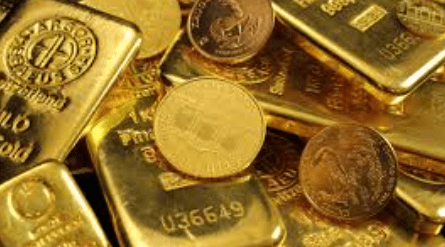Gold has been on an impressive journey this year, with its value skyrocketing to new heights. On Friday, the price of gold hit a record-breaking $2,639.40 per ounce. This surge came after the US Federal Reserve made a 50 basis point rate cut earlier in the week. The precious metal has been gaining ground not just this week but throughout the entire year, increasing by a remarkable 26%. This is the biggest rise gold has seen since 2010.
Why is Gold on the Rise?
There are several reasons for gold’s dramatic price increase, with two big factors standing out. First, the US central bank, also known as the Federal Reserve, cut interest rates. When interest rates are lower, investments like bonds offer less return. As a result, investors look for other places to park their money, and gold, being a safe asset, becomes more attractive.

Second, rising tensions in the Middle East are adding fuel to the fire. When there’s global uncertainty—like conflicts or political tension—investors turn to safe-haven assets like gold. People feel more secure putting their money into something that has held value for thousands of years.
The Role of Central Banks
Since 2022, central banks around the world have been buying gold at a rate three times faster than before. Why are they doing this? Many countries, including China and Russia, want to protect their money and reserves. Gold is a smart choice because it doesn’t rely on other countries’ currencies or economies. By holding more gold, central banks are better able to safeguard their financial systems.
China, in particular, has been rapidly growing its stockpile of gold. Over the past two years, the Chinese central bank has added millions of ounces to its reserves. This push to buy more gold is part of a broader effort to diversify their assets and not rely so much on the US dollar.
Russia has also been in the gold-buying game. Since the country’s invasion of Ukraine in 2022, Russia has been ramping up its gold reserves to protect its economy from global sanctions. Central banks like these are showing a clear interest in gold as a way to manage risks in uncertain times.
A Store of Value in Troubled Times
One major reason why gold has remained a trusted asset is because it acts as a hedge—or protection—against many risks. Ryan McIntyre, a senior portfolio manager at Sprott Asset Management, explains that gold is one of the few assets that can counterbalance the economic challenges we’re facing today. For example, countries like the US and others in the western world are dealing with rising debts and economic instability.
McIntyre also notes that gold is under-owned in many parts of the world. This means there’s still room for more people to invest in gold, which could push the price even higher in the future. Additionally, as the value of the US dollar weakens, gold becomes even more appealing. This is because gold’s value isn’t tied to any single country’s currency, making it a reliable store of wealth.
Is the Gold Rally Here to Stay?
While gold is on a hot streak, some experts warn that it might not last forever. Analysts from Commerzbank believe that the US Federal Reserve will likely continue cutting interest rates but only by small amounts. If the Fed cuts rates by just 25 basis points in the next two meetings, as expected, gold’s momentum could slow down.
However, Goldman Sachs predicts that gold prices could rise to $2,700 by early 2025, particularly if there are more interest rate cuts in the US. It’s clear that as long as interest rates remain low and global tensions persist, gold will likely continue its upward climb.
India’s Record-Breaking Gold Imports
India, one of the largest consumers of gold in the world, has also played a part in the metal’s rising price. In August, India’s gold imports reached a record high of $10.1 billion. This spike in demand adds more pressure to the already limited supply of gold, further driving up prices.
India’s love for gold goes beyond just investment. Gold is deeply ingrained in the culture, used in jewelry, and seen as a symbol of wealth and status. When demand increases in India, it has a noticeable effect on global prices.
A Weaker Dollar and Geopolitical Risks
In addition to central banks and global demand, another key factor behind gold’s surge is the weaker US dollar. As the dollar loses value, it takes more dollars to buy the same amount of gold. This makes gold more expensive in terms of dollars, pushing up its price.

Geopolitical risks, like the ongoing conflicts in the Middle East and tensions in other parts of the world, are also pushing investors toward gold. Alex Ebkarian, COO of Allegiance Gold, explains that the combination of low interest rates, a weaker dollar, and global uncertainties are driving gold’s rally. People are looking for a safe place to invest, and gold has always been a reliable option.
What’s Next for Gold?
With all these factors at play, it’s hard to say exactly what the future holds for gold. However, one thing is clear: gold’s role as a safe-haven asset is stronger than ever. Whether it’s central banks stocking up on gold, investors seeking protection from a weaker dollar, or people worried about global conflicts, gold is proving to be a smart choice in uncertain times.
As we look ahead, the future of gold will likely depend on what happens with US interest rates, the global economy, and geopolitical events. But for now, gold is shining bright, and its rally shows no signs of stopping anytime soon.


